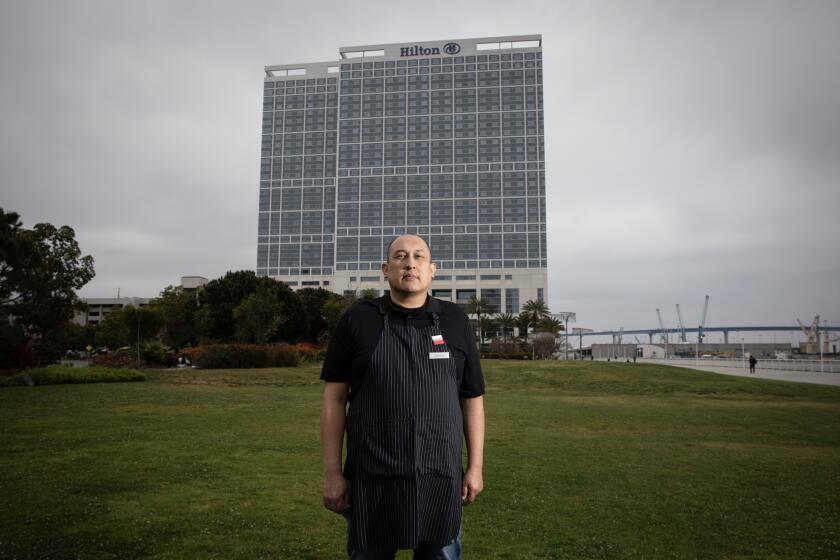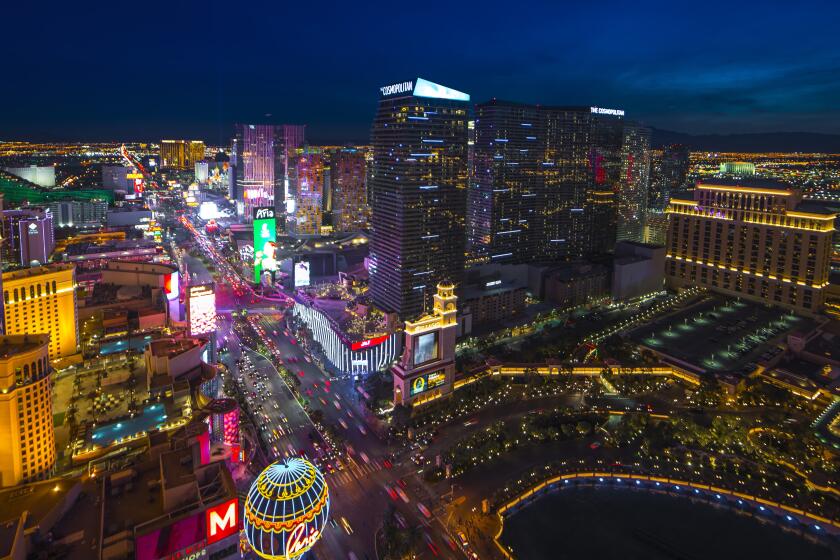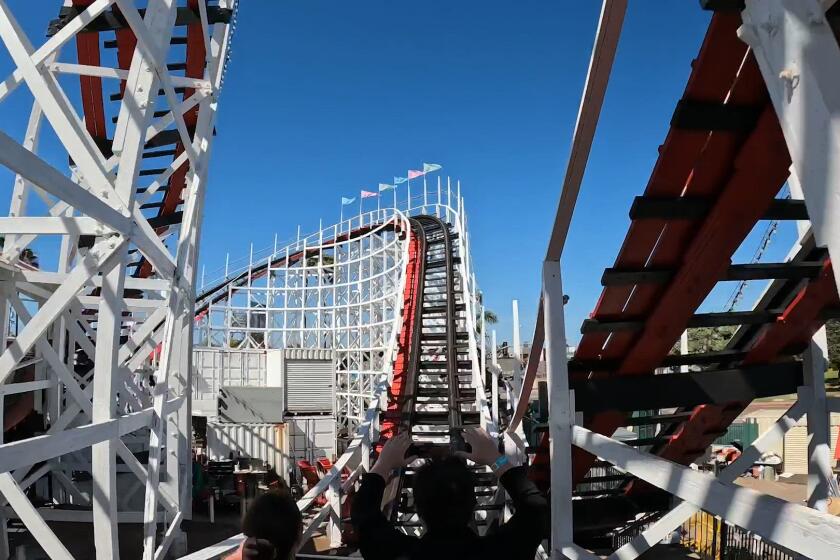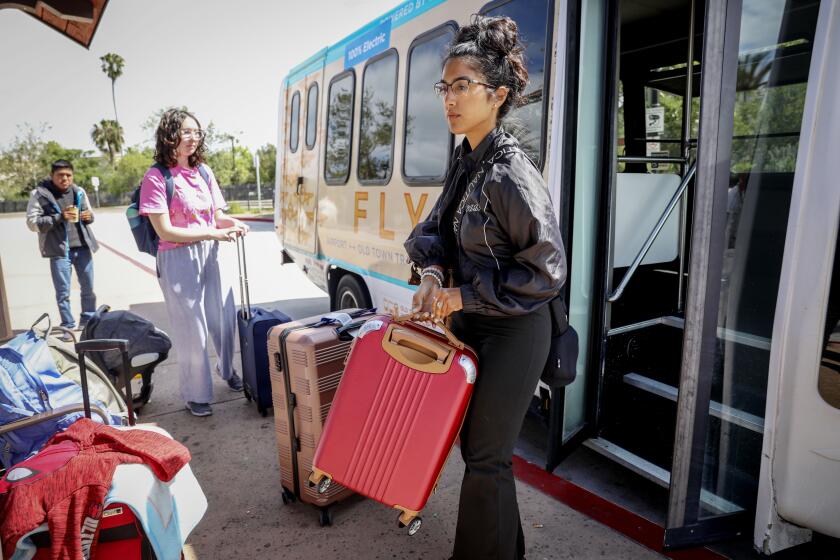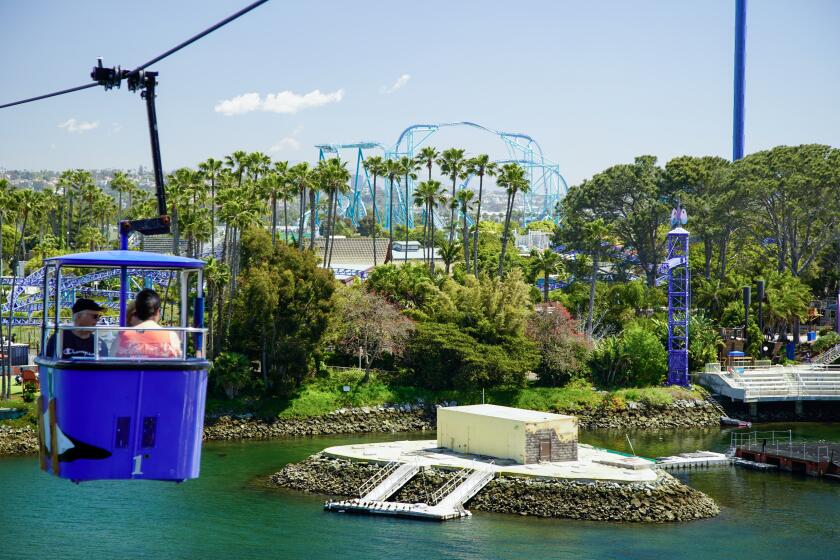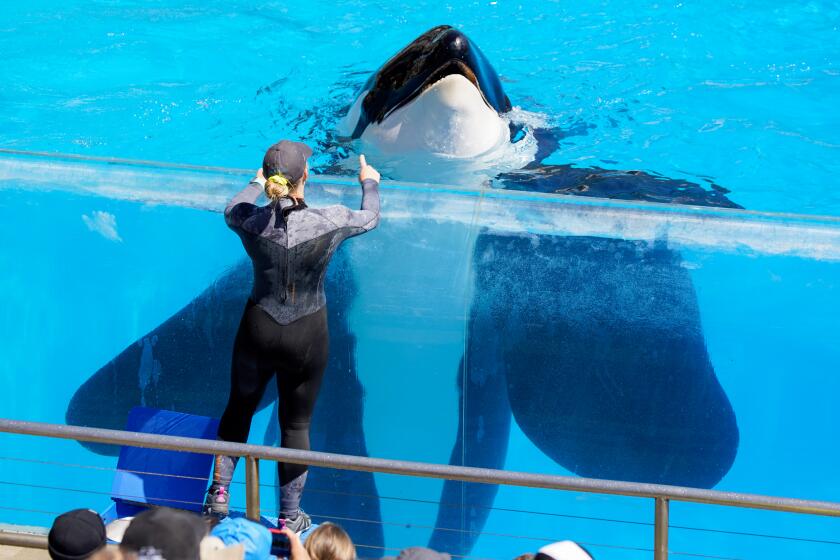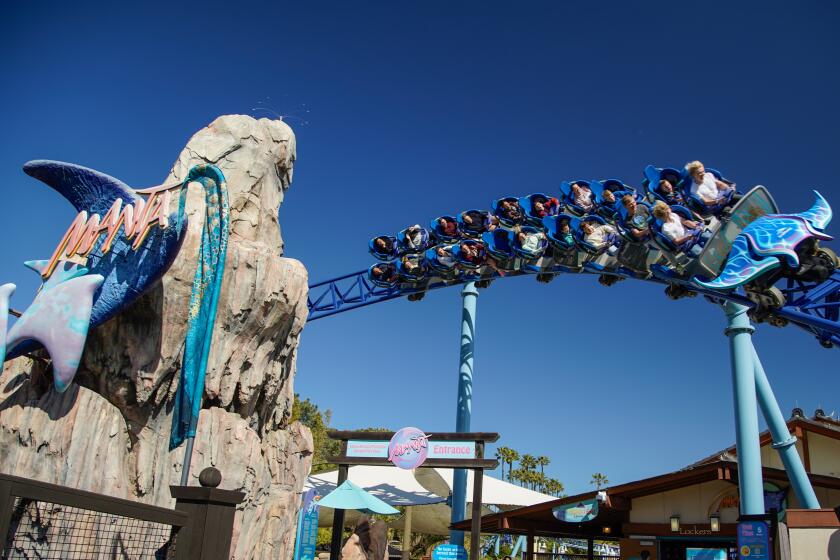More pressure on SeaWorld for orca sea pens
A decision this week by Baltimore’s National Aquarium to relocate its dolphin population to a seaside refuge will likely fuel more demands that SeaWorld consider a similar move for its killer whales, but the company said it remains just as opposed as it has always been.
Like SeaWorld, the aquarium had faced years of public protests by animal rights activists pressing the tourist attraction to no longer hold their dolphins in captivity.
But unlike SeaWorld, which only recently announced that it would be phasing out its theatrical Shamu shows, the National Aquarium halted its dolphin performances about four years ago.
Aquarium CEO John Racanelli said the decision followed a five-year research effort that weighed the option of rebuilding its dolphin pools in a more naturalistic environment.
In the end, the aquarium staff and board decided that “the best way forward was to create a protected, year-round, seaside refuge for the dolphins,” Racanelli said in an opinion piece published in the Baltimore Sun. He acknowledged the changing public opinions surrounding animal captivity that also played a role in SeaWorld’s decision this year to end captive breeding of its 29 orcas.
“Through feedback painstakingly gathered over 10 years, we have learned that the American public is increasingly uneasy with the notion of keeping dolphins and whales in captivity,” he wrote. “These beliefs matter to us.”
The nonprofit aquarium is currently researching locations in Florida and the Caribbean and is launching a fundraising effort but has not stated how much its new venture will cost. It expects to have created a new home for its eight Atlantic bottlenose dolphins by 2020.
While SeaWorld’s move this year to end breeding of its orcas was a major turning point for the Orlando-based company, CEO Joel Manby has said SeaWorld will not go so far as to have its killer whales live out their lives in sea pens. SeaWorld reiterated that position on Tuesday.
“While some may use today’s announcement to continue to call for the release of our orcas to sea cages, our point of view has not changed,” SeaWorld said. “Sea cages for our whales are high risk. Most of our whales were born at SeaWorld, and the best, and safest, future for them is to let them live out their lives here, receiving top care, in state-of-the-art habitats, safe from pollution and the other environmental threats they would face in our oceans.”
As for retiring dolphins to ocean sanctuaries, SeaWorld also reaffirmed its position that the cetaceans are best cared for in its parks. SeaWorld San Diego is currently home to 36 dolphins.
“Thousands of dolphins die off the coast of North America every year, and zoos and aquariums play an important role in educating the public about their plight in the wild,” the statement read.
Still, public attitudes about animals housed in a zoo or aquarium setting are rapidly evolving and fueling changes that would have been unheard of a decade ago. Just last month, Ringling Bros. and Barnum & Bailey Circus retired its last performing elephants.
Capitalizing on changing public sentiment, a group of scientists, animal rights activists, former SeaWorld trainers and others last month launched the Whale Sanctuary Project, with the goal of creating a seaside home for whales, dolphins and porpoises. Munchkin, a baby products company, is seeding the effort with a $1 million pledge toward what will eventually be an estimated $20 million project.
“We’ve been keeping a close eye on what SeaWorld is saying because we launched the whale sanctuary project last month, so between that and now the Baltimore Aquarium, SeaWorld is feeling a tremendous amount of pressure,” said Whale Sanctuary President Lori Marino, a neuroscientist and marine mammal expert. “We’re hoping that SeaWorld will come around and other facilities in North America as well that are holding dolphins and beluga whales. Ending the orca breeding is good, but it’s not enough.”
Wayne Pacelle, CEO of the Humane Society of the United States, which has recently forged a cooperative relationship with SeaWorld, applauded what he called a “far-reaching” move by the Baltimore aquarium.
Asked whether he thinks it could influence SeaWorld to reconsider its position on ocean sanctuaries, Pacelle said, “We understand that SeaWorld has been in touch with the National Aquarium and will pay close attention to the research and execution of the plan announced this week. For more immediate purposes, we’ve asked SeaWorld, if it wants additional dolphins, to cease breeding and only add animals to its population by rescuing dolphins in distress who cannot be released into the wild.”
It’s unlikely that SeaWorld will follow the lead of Baltimore, nor will it feel pressured to do so, believes Kathleen Dezio, president of the Alliance of Marine Mammal Parks & Aquariums. Sea pens are not necessarily bad but it’s wrong, she said, to characterize them as superior to the care that marine mammals get in a zoological setting.
“I just don’t think the aquarium’s announcement will have any impact on any zoological institution,” said Dezio. “Baltimore had previously indicated their facility was in need of significant overhaul and that it would cost a significant amount of money.
“When you try to pressure zoological institutions to ‘retire’ their animals, we’re talking about a romantic anthropomorphic notion not supported by the scientific facts.”
Racanelli of the Baltimore Aquarium said it is still to early to estimate a cost for the planned dolphin sanctuary, saying it will depend on the price of the land and construction expenses associated with whatever location is chosen.
He chose to not weigh in, however, on what impact the aquarium’s plans would have on SeaWorld.
“We respect the rights of all accredited zoos and aquariums,” he said, “to make the best decisions for their animals and communities.”
Get U-T Business in your inbox on Mondays
Get ready for your week with the week’s top business stories from San Diego and California, in your inbox Monday mornings.
You may occasionally receive promotional content from the San Diego Union-Tribune.


